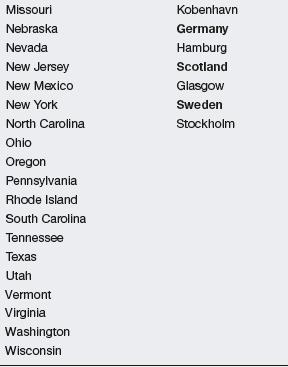European retailers from Ikea to Zara have done quite well marketing their products in the United States.
Question:
European retailers from Ikea to Zara have done quite well marketing their products in the United States. But United States retailers have had a much more difficult time in exporting their products to Europe by opening their own stores. For example, sales of Gap in Europe have been declining since 2005, while Walmart stores withdrew from Germany in 2006.
United States-based Urban Outfitters is increasing its efforts in Europe and hopes its designed-for-Europe strategy will be successful where others have failed. Urban Outfitters owns and operates five retail brands: Urban Outfitters, Anthropologie, Free People, Terrain, and Leifsdottir, a luxury brand for Anthropologie.
The company was founded in 1970 and focused on so-called ‘funky’ fashion and household products. The product line has evolved from vintage, bohemian, retro, hipster, ironically humorous, kitschy apparel and furniture to include luxury brands and several designer collections.
The company operates more than 140 locations in 37 states in the United States, Canada, and Europe (see Table 8.5).
Urban Outfitters currently has more than 40 stores across Europe, and the company intends to pick up the pace to get to 100 European stores within the next decade.
Urban Outfitters began its European venture differently, too. US-based chains such as Abercrombie & Fitch stock their European stores with the same merchandise they sell at home. But before opening its first store in Europe in 1998, Urban Outfitters set up a separate design and merchandising unit in London so it could tailor its goods to European tastes. The duplicate operation increased overhead and delayed profitability in Europe, but the mix of American and European styles helps Urban Outfitters stand out.
Urban Outfitters could use the euro-growth. After increasing worldwide revenue an average of 22% annually from fiscal 2003 to 2009, the company said sales expanded just 6% in the year ended Jan 31, to $1.94 billion.
While per-store revenue rose 10% at Anthropologie and 18% at the newer Free People women’s clothing subsidiary, sales at the namesake chain slipped 1%.


Europe is known as a crowded and high-cost market for retailing, and competition from other US clothing chains is growing. American Apparel has 51 stores across 11 countries, and Abercrombie has 12 Hollister stores in shopping malls in the United Kingdom and Germany, with plans to triple that number this year. In fact Abercrombie opened a flagship store in Milan, Italy and Japan in late 2009 and a flagship store opened in Copenhagen, Denmark in 2010 and in Mexico in 2015. Meanwhile Hollister stores are opening up across Europe (Boyle, 2009). On a per-unit basis, though, Urban’s European stores have the same healthy results as those in the United States. Europe now accounts for nearly 10% of total revenue.
The company’s expansion does not stop on the Continent.
Senior managers recently scouted locations in China, Japan, and South Korea for what eventually could be 100 stores in Asia. Scouting ahead of such expansion gives the company plenty of time to study local tastes.
Questions
1. Evaluate Urban Outfitters designed-for-Europe strategy in light of decreased profitability due in part to increased overhead. Was this a wise decision? Explain.
2. Is the company moving too fast or too slow in expanding its export markets in Europe? Explain.
3. Should Urban Outfitters expand to Asia before solidifying its position in Europe? Why or why not?
Step by Step Answer:

International Marketing And Export Management
ISBN: 9781292016924
8th Edition
Authors: Gerald Albaum , Alexander Josiassen , Edwin Duerr





